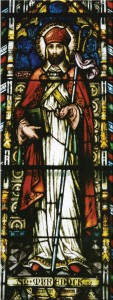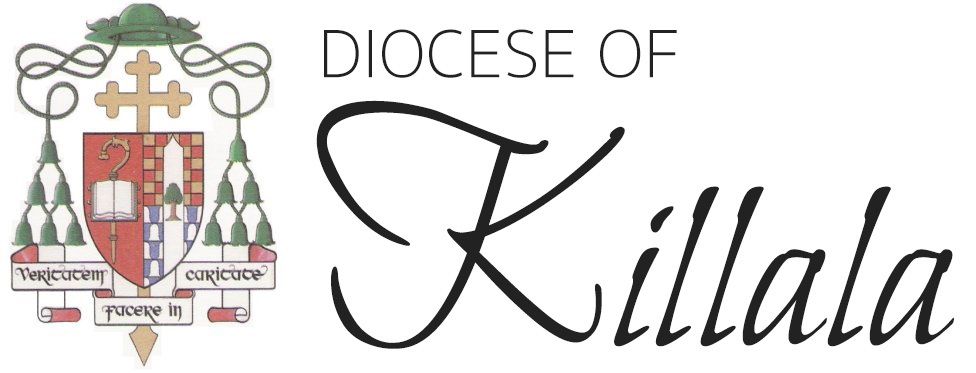Even though the boundaries of the diocese of Killala were only settled in the Synod of Rathbrasil in the easily-remembered year of 111l a. d., centuries earlier the importance of church history was noted in the work of Tíreachán, the Patristic scholar, who served as a bishop in Tyrawley in the seventh century.
Patrician scholars now tend to accept that Silva Focluti, the Wood of Fochaill, on the western shore of Killala Bay, was the location of the six years Patrick spent in captivity in Ireland and the origins of that assumption date back to Tíreachán.
While it might be said that Tírechan’s hagiographical composition simply deferred to his own diocese of Killala in situating Patrick’s time of slavery in Foghill, in what is now Lacken parish, the claim of Foghill is too substantial to be dismissed in such a fashion. Foghill, as the location of Patrick’s term of slavery in Ireland, has a high degree of historical credibility. Scholars suggest that ‘Foclut’ or ‘Foclud’ is the only genuine Irish name in the whole of St Patrick’s Confessions.
So the charting of the history of Killala diocese has a substantial pedigree, not just as the locus of Patrick’s slavery but in the writings of one of the great Patrician scholars.
In the centuries since, most if not all of the sources of history in Killala diocese have disappeared and tracing the story of Killala, as in other dioceses, is a difficult almost impossible task. In more recent centuries this is not the case and, while the archive can sometimes be slight, from the end of the eighteenth century in particular research in Killala diocesan history has produced a significant dividend.
 Monsignor Edward MacHale, during the course of a long life-time immersed himself in the history of his native diocese and his research produced his four-volume, The Parishes in the Diocese of Killala (1985), Letters from the Distant Past, Killala Diocese in the Papal Letters and Annates, c. 1200-1500, (1991) and also the great legacy of his meticulously organised files in the Killala Diocesan Archives.
Monsignor Edward MacHale, during the course of a long life-time immersed himself in the history of his native diocese and his research produced his four-volume, The Parishes in the Diocese of Killala (1985), Letters from the Distant Past, Killala Diocese in the Papal Letters and Annates, c. 1200-1500, (1991) and also the great legacy of his meticulously organised files in the Killala Diocesan Archives.
Bishop Thomas McDonnell produced The Diocese of Killala from its Institution to the End of the Penal Times (Ballina, 1976), a significant contribution that provides an important scaffolding for the history of the diocese.
However, despite the important contributions of Monsignor MacHale and Bishop McDonnell it was felt that a more formal arrangement needed to be put in place in order that our diocesan history be given the importance that was its due. Other dioceses, in recent years, notably Killaloe and Achonry had produced significant histories, and the feeling was that the history of Killala diocese should be given similar attention.
In 2011, Bishop John Fleming announced the appointment of Fr Brendan Hoban as Diocesan Historian, with the brief of researching and writing the history of the diocese. With two substantial publications already to his credit – A Melancholy Truth, The Travels and Travails of Fr Charles Bourke, c. 1765-1820 (2008) and Turbulent Diocese, The Killala Troubles, 1798-1848 (2011), Hoban was well placed to take on the challenge.
A Melancholy Truth told the story of a Killala priest, a clerical troubadour, who had an exotic career from his ordination in 1792 in the Irish College, Salamanca in Spain, to his appointment as first parish priest of Baton Rouge in Louisiana to his return to Ireland and to Killala, to his absconding without permission to become a chaplain to a colony of Irish and Scots of mixed faith in the Red River valley on the borders of North Dakota and Minnesota, to his return to Ireland and the eventual disagreement with his bishop, Peter Waldron, that led to Bourke’s pamphlet, Popish Episcopal Tyranny (1817) and his suspension and eventual excommunication.
Turbulent Diocese explains the complex history of Killala diocese over the course of the first half of the nineteenth century, particularly the dispute between two clerical factions – those who supported Bishop Francis O’Finan who succeeded John MacHale as bishop and those who supported MacHale’s opposition to O’Finan.
After his appointment Hoban embarked on an ambitious three volume Readings in Killala Diocesan History, producing Trouble & Strife, Fifty Killala Priests, 1600-2000, (2012)
Tracing the Stem, Killala Bishops (2015).
The third and final volume, Telling the Story, A Dictionary of Killala Priests is expected at Easter, 2016. At present Hoban is also researching a biography of Dean John Patrick Lyons of Kilmore Erris and an account of the Great Famine in Killala diocese.

